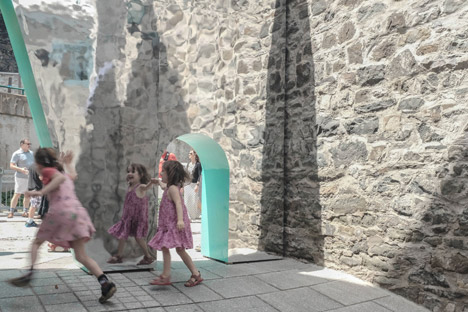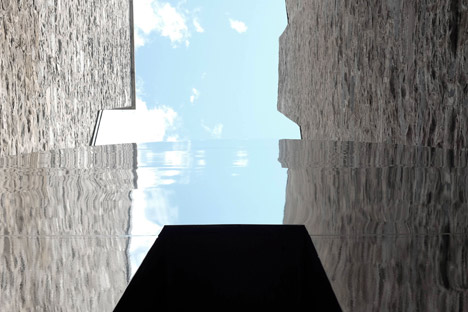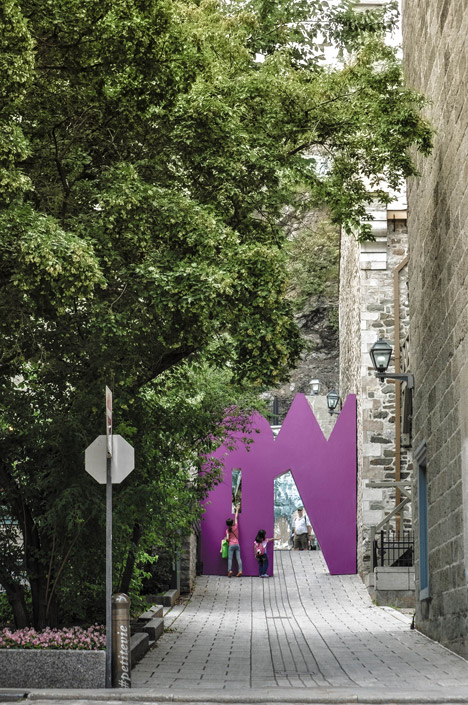Fontaine/Fortin/Labelle creates Pomo-inspired entrance to Quebec passageway
Pomo summer: design collective Fontaine/Fortin/Labelle has blocked both ends of a lane in Quebec's Quartier Création with a Postmodern-influenced installation of colourful walls and geometric doorways (+ slideshow).

Named Petite Vie, French for "little life", the installation was built as part of Les Passages Insolites – a public art festival curated by creative non-profit organisation EXMURO that involves the creation of unusual passageways.

The collective, which comprises Francis Fontaine, Luca Fortin and Pascal Labelle, won a competition open to architecture students from the local Laval University.

"Without any imposed theme, we were asked to invest a place in the Quartier Création to create an unusual situation," Fortin told Dezeen.

Designers are often asked to temporarily intervene with entranceways and passages to highlight their use for events. Giles Miller clad an archway in 20,000 wooden hexagons at the entrance to a Clerkenwell Design Week venue, while an open tunnel beneath a bridge in northern Spain was turned into a concealed passageway with a secret mirror by VAV Architects.
The Canadian team added walls made of construction wood and plywood in the gap between two houses, which usually serves as a link between two perpendicular streets.

The sides that face outwards are covered with enamel paint in bright blue and purple respectively, while the interior walls are clad with vinyl mirrors.

Both are anchored into the existing walls and the ground, and are perforated with playfully-shaped doors and windows to encourage passersby to use the walkway.

The shapes of the walls and the openings take their inspiration from typical architecture in Old Québec like arrow slits and steep roofs.

"Without directly taking over the surrounding elements, formal gestures are intended as a reinterpretation of some typical forms of the Old Québec, executed with a Postmodern detachment," said Fortin.

Dezeen is currently celebrating a revival of Postmodernism with a summer-long series. Other examples of the controversial movement's return include a Greek apartment filled with patterned tiles and a bright yellow staircase, and a range of tiles based on Postmodern buildings.
The name of Fontaine/Fortin/Labelle's installation is taken from the title of a popular 1990s Quebec television series. "Playing on notions of decors, the title is a tribute to the vivid and colourful images from that show," added Fortin.

The collective has found that the installation has proven most popular with kids, and that pedestrian usage of the passage has increased since it was created.

"Children are naturally attracted to the interior walls – the bright colours and the little door contribute greatly to the interest and games with the mirrors are popular," said Fortin.
Petite Vie will remain in situ until 2 November 2015.
